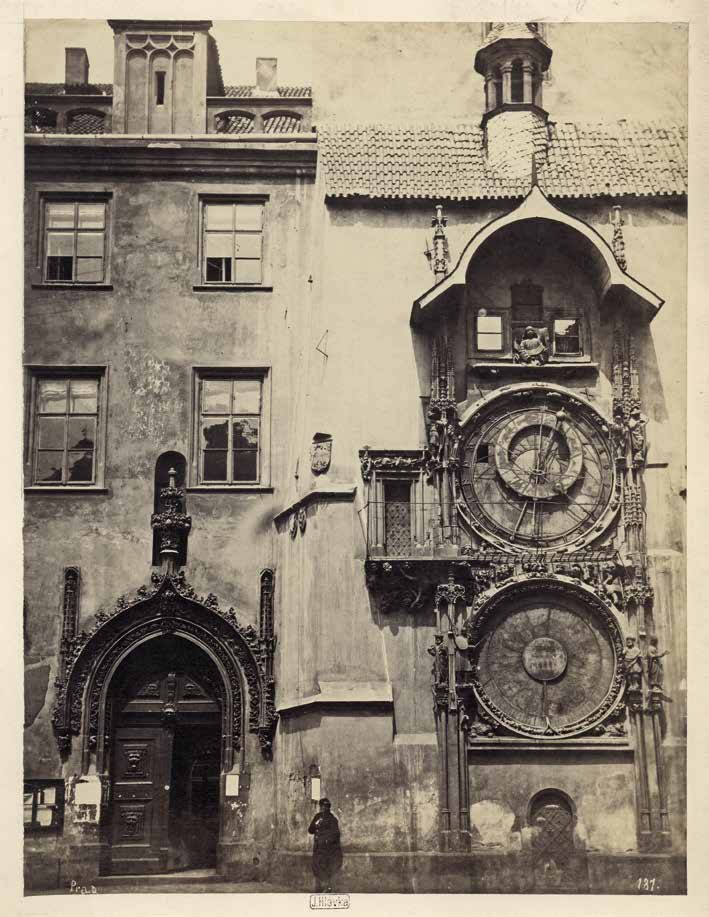
The Prague astronimical clock is a medieval astronomical clock mounted on the southern wall of Old Town Hall in the Old Town square.
The clock mechanism itself has three main components: the astronomical dial, representing the position of the Sun and the Moon in the sky and displaying various astronomical details; statues of various Catholic saints stand on either side of the clock; „The Walk of the Apostles“, a clockwork hourly show of figures of the Apostles and other moving sculptures – notably a figure of Death (represented by a skeleton) striking the time; and a calendar dial with medallions representing the months. According to local legend, the city will suffer if the clock is neglected and its good operation is placed in jeopardy; a ghost mounted on the clock was supposed to nod its head in confirmation. According to the legend the only hope was represented by a boy born on New Year’s night.
The oldest part of the Orloj, the mechanical clock and astronomical dial, dates back to 1410 when it was made by clockmaker Mikuláš of Kadaň and Jan Šindel. The first recorded mention of the clock was on 9 October 1410. Around 1490 the calendar dial was added and the clock facade was decorated with gothic sculptures.
Formerly, it was believed that the Orloj was constructed in 1490 by clockmaster Jan Růže (also called Hanuš). This is now known to be a historical mistake. A legend, recounted by Alois Jirásek has it that the clockmaker Hanuš was blinded on the order of the Prague Councillors so that he could not repeat his work; in turn he disabled the clock and no one was able to repair it for the next 100 years.








